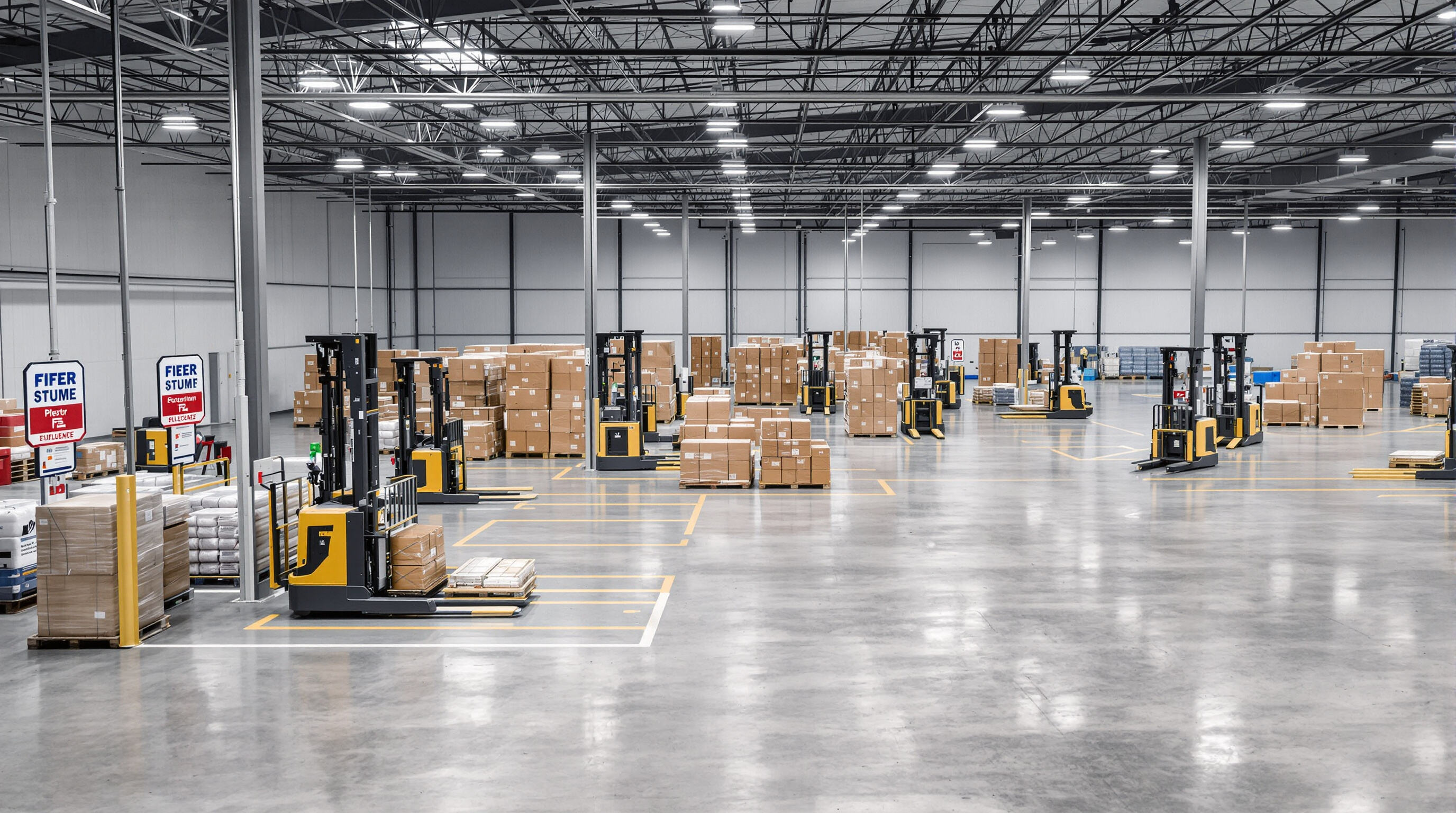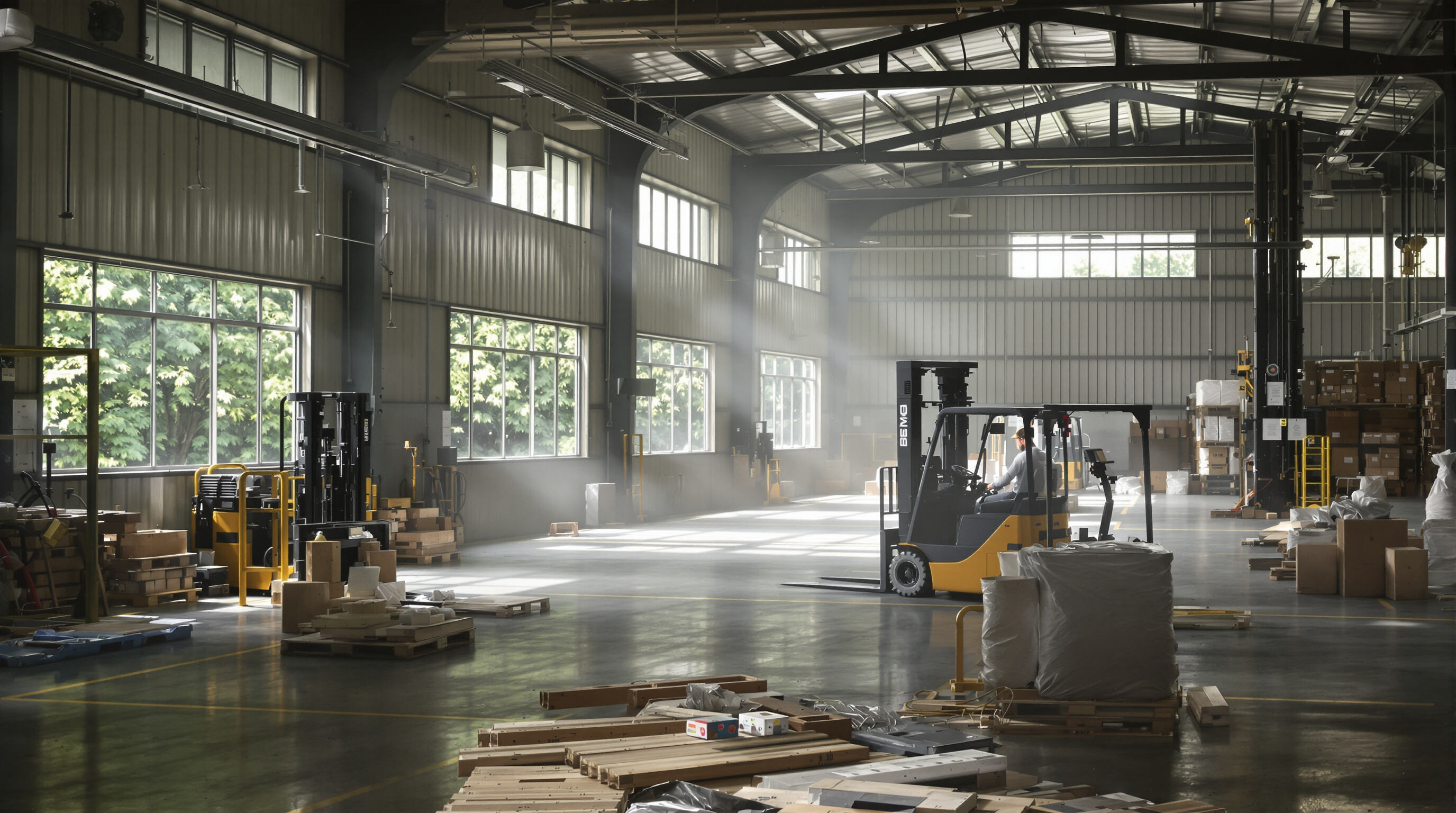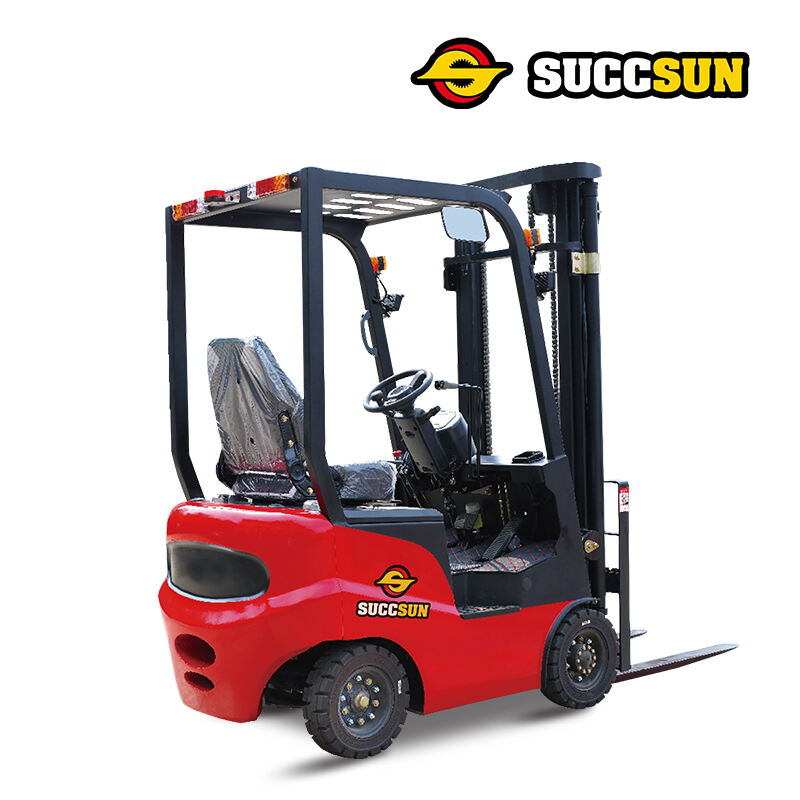Electric Forklift of Lower Operating Costs and Long-Term Savings

Reduced Fuel and Maintenance Expenses With Electric Forklifts
Switching to electric forklifts means saying goodbye to those unpredictable diesel price hikes once and for all. The savings don't stop there either. Companies report around a third less on maintenance bills because these machines have far fewer components that wear out over time. No more worrying about oil changes, replacing spark plugs, or fixing exhaust systems according to industry data from last year's Logistics Efficiency Report. Plus, facilities save money on compliance costs related to storing traditional fuels and undergoing regular emissions checks. All these factors combined create real cost advantages for warehouse operations looking to cut down their bottom line expenses while staying environmentally responsible.
Energy Efficiency and Cost-Effective Performance
Electric forklifts manage to turn around 75 to 80 percent of their battery power into actual work, while traditional gas powered ones only get about 20 to 25 percent out of their fuel according to recent industry research from 2024. That kind of difference adds up fast financially speaking, saving businesses between twelve hundred and eighteen hundred dollars each year on energy costs alone for every single machine they operate. What makes these electric models even better is something called regenerative braking technology. When operators constantly start and stop the forklifts throughout their shifts, this system actually captures some of that wasted motion energy and sends it right back into the battery pack. The result? Around fifteen to twenty percent less total power needed over time, which means longer runtime between charges and lower operating expenses in the long run.
Battery Lifespan and Maintenance: Maximizing Long-Term ROI
Modern lithium-ion batteries deliver 2,000–3,000 charge cycles–30% more than lead-acid batteries–while maintaining 80% capacity over their lifespan (Industrial Battery Research 2022). Features like automated watering systems and predictive maintenance software extend battery life, lowering replacement costs by $2,000–$3,500 per unit over five years.
Case Study: Cost Savings in a Mid-Sized Warehouse
A Texas-based warehouse saved $164,000 annually after replacing eight IC forklifts with electric models. Over 18 months, the facility achieved:
- 22% lower total energy costs
- 37% reduction in maintenance labor hours
- 6.5% increase in throughput due to reduced downtime
2025 warehouse operational reports show similar facilities achieving ROI within 18–26 months through strategic electric forklift adoption.
Zero Emissions and Environmental Sustainability

Emission-Free Operation and Improved Indoor Air Quality
Electric forklifts don't have those pesky tailpipe emissions that fill up indoor spaces with stuff like particulate matter and nitrogen oxides. No diesel fumes either something the World Health Organization actually lists as a Group 1 carcinogen. Pretty serious stuff when workers are breathing this in day after day. According to research published in Nature last year, companies that made the switch to electric lift trucks saw their carbon dioxide output drop by around 85%. And it wasn't just numbers on paper either employees reported feeling better overall, especially with regards to their lungs and breathing problems going down noticeably.
Reducing Carbon Footprint With Electric Forklift Adoption
Electric forklifts cut down on emissions at facilities by around 72% compared to their diesel counterparts, based on what the EPA has found about energy efficiency. Mid sized warehouses could save between 40 and 60 metric tons of CO2 each year by making the switch. That's roughly the same as if someone planted 1000 fully grown trees somewhere. The real environmental boost comes from combining these electric lifts with clean power options such as solar panels or wind turbines, which helps businesses move closer to their net zero targets much faster.
Sustainability Advantages in Modern Warehouse Logistics
Electric forklifts support circular economy principles through 90% recyclable lithium-ion batteries and regenerative braking systems that recover 15–30% of expended energy. Leading logistics centers prioritize electric fleets in green certification programs such as LEED. California’s Sustainable Freight Initiative reports a 23% faster adoption rate among participants using electric material handling equipment.
Quieter Operation for Safer, More Focused Work Environments
Noise Reduction Benefits of Electric Forklifts in Enclosed Spaces
Electric forklifts run around 50 to 70 decibels, making them about 70 percent quieter compared to those old diesel or propane powered ones that can hit anywhere from 85 up to 95 decibels. The difference matters a lot inside those big warehouses with all those metal walls and high ceilings where sounds just bounce around everywhere. When noise gets amplified like that, it makes communication between workers harder and leads to tired ears pretty quickly. According to some recent findings published in the Occupational Safety Journal back in 2023, employees working in places that switched to electric lift trucks saw about half as many complaints related to noise stress. Plus, the background noise stays well under the 80 decibel mark set by OSHA regulations most of the time.
How Quiet Operation Improves Workplace Safety and Concentration
Quieter workspaces make it easier for operators to talk with people on the warehouse floor, which helps prevent accidents that happen when instructions get mixed up - something that causes about one third of all warehouse incidents according to National Safety Council data from last year. When there's less background noise, workers actually respond 27 percent quicker to those backup alarms and safety alerts meant for pedestrians. And interestingly enough, studies at Cornell's Workplace Innovation Lab show that fewer sounds getting in the way means employees make roughly 19% fewer mistakes when handling inventory items. These numbers really highlight why controlling noise levels matters so much in these environments.
Superior Energy Efficiency and Operational Performance
Why Electric Forklifts Offer Higher Energy-to-Work Conversion Rates
Electric forklifts manage to turn around 90 to 95 percent of their power into actual useful work, which beats the roughly 20 to 30 percent efficiency we see with traditional gas powered machines. What makes this possible? Mainly because they use those modern brushless motors plus clever regenerative braking tech that captures energy when slowing down. According to some research published last year in the field of material handling, switching to electric models cuts down wasted energy by about two thirds for every single pallet handled compared to running on diesel fuel instead. That kind of improvement adds up over time for warehouse operations looking at both their bottom line and environmental impact.
Performance Comparison: Electric vs. Internal Combustion Forklifts
| Metric | Electric Forklifts | IC Forklifts |
|---|---|---|
| Avg. hourly fuel cost | $0.18 | $1.70 |
| Noise levels | 70 dB | 90 dB |
| Torque consistency | ±2% variance | ±15% variance |
The 2024 Warehouse Technology Report shows electric forklifts reduce operational costs by 40–50% over five years. Instant torque delivery ensures smooth acceleration, eliminating the power lag common in gas-powered engines.
Trend Analysis: Growing Adoption of Electric Forklifts in Logistics
Logistics hubs increased electric forklift deployments by 25% year-over-year in 2023, driven by EPA emissions mandates and declining lithium-ion battery prices, which have dropped 22% since 2020. Facilities using energy-efficient models report 18% faster cycle times and 31% fewer maintenance interruptions compared to IC fleets. These advantages are reshaping operations in temperature-controlled and automated warehouses.
Improved Worker Health and Overall Workplace Conditions
Health benefits from cleaner, quieter warehouse environments
Switching to electric forklifts cuts down on those harmful exhaust fumes that can lead to breathing problems. According to some recent studies from MDPI back in 2023, these electric models actually reduce airborne particles by around 34% inside warehouses and other enclosed areas. And let's not forget about noise pollution either. The sound level stays under 75 decibels, which is roughly 65% quieter compared to traditional gas powered ones. Workers report feeling better too, with about 27% fewer complaints about headaches and mistakes caused by tiredness. Looking at broader workplace health trends from 2024, companies that focus on good air quality and lower noise levels see their staff taking 18% fewer sick days overall. Makes sense when you think about it really.
Enhancing employee satisfaction and productivity with Electric Forklifts
When there's no engine rumble or loud noises around, people can actually hear each other better, which cuts down on those annoying communication mix-ups by about 41%. Warehouse staff working with electric equipment tend to be happier too, clocking in roughly 22% higher satisfaction ratings compared to traditional setups. And guess what? These places see workers staying put longer than usual, with turnover rates sitting at 15% under what's typical across the industry. That's money saved for companies since it costs around $15k just to replace someone who knows their way around materials handling. Managers have noticed something else interesting happening as well. Employees seem to get more done throughout their shifts because they're not constantly battling uncomfortable conditions. The result? Productivity jumps that translate to about 12 extra days of work per person every year when looking at the big picture.
FAQs About Electric Forklifts
What are the main advantages of using electric forklifts over internal combustion forklifts?
Electric forklifts offer several advantages including lower operating costs, reduced fuel and maintenance expenses, zero emissions, quieter operation, and improved worker health and productivity. They also provide a higher energy-to-work conversion rate and encourage environmental sustainability.
How do electric forklifts contribute to energy efficiency?
Electric forklifts convert 75 to 95 percent of their battery power into actual work, compared to 20 to 30 percent efficiency for traditional gas-powered machines. Technologies like regenerative braking contribute to longer run times and lower energy use.
Are electric forklifts cost-effective for warehouse operations?
Yes, electric forklifts are cost-effective as they reduce fuel costs, maintenance expenses, and energy costs significantly. Facilities that switch to electric models often achieve ROI within 18-26 months.
Do electric forklifts improve workplace safety?
Electric forklifts improve workplace safety by reducing noise levels and eliminating harmful emissions. This leads to better communication among workers and reduces the incidence of accidents.
Table of Contents
- Electric Forklift of Lower Operating Costs and Long-Term Savings
- Zero Emissions and Environmental Sustainability
- Quieter Operation for Safer, More Focused Work Environments
- Superior Energy Efficiency and Operational Performance
- Improved Worker Health and Overall Workplace Conditions
- FAQs About Electric Forklifts


